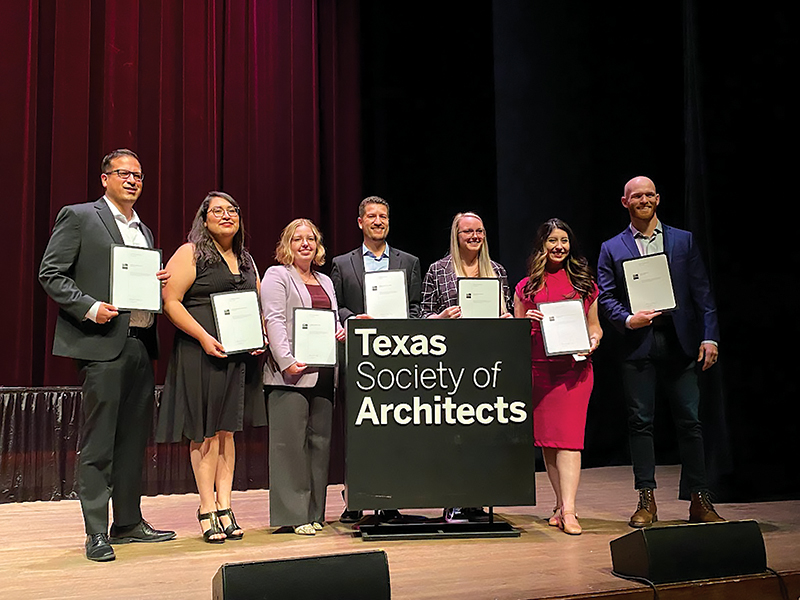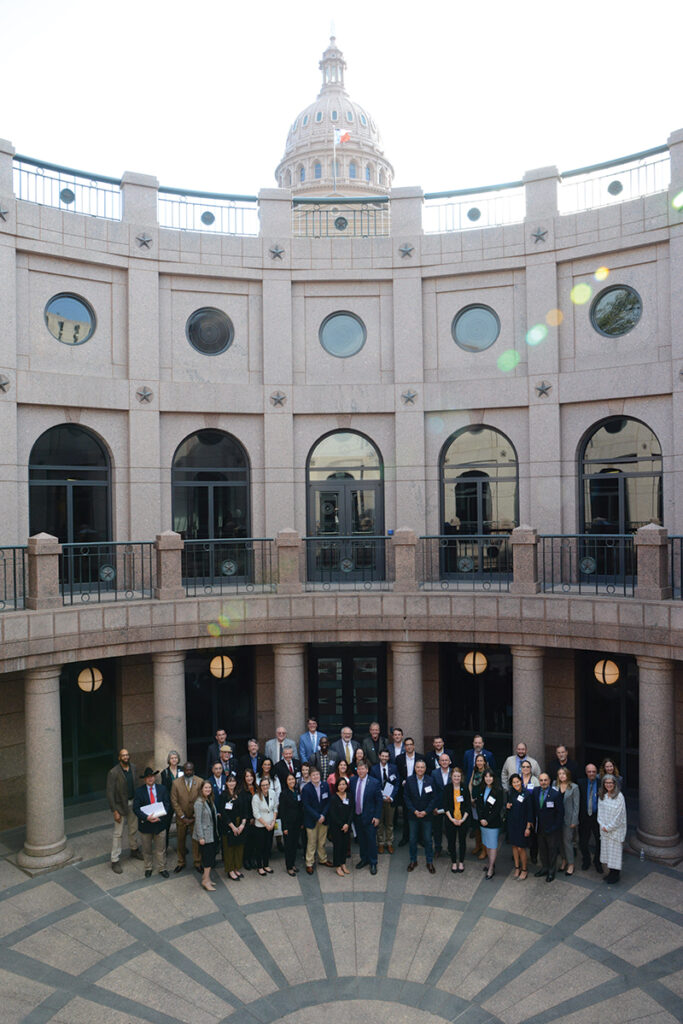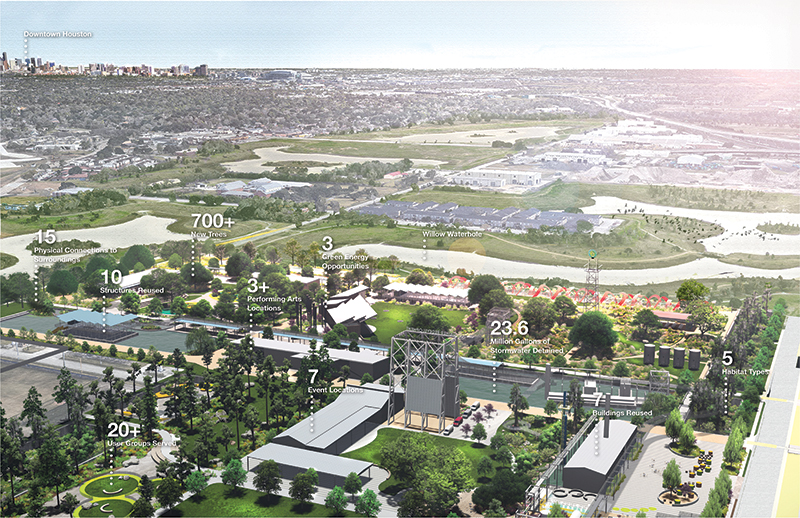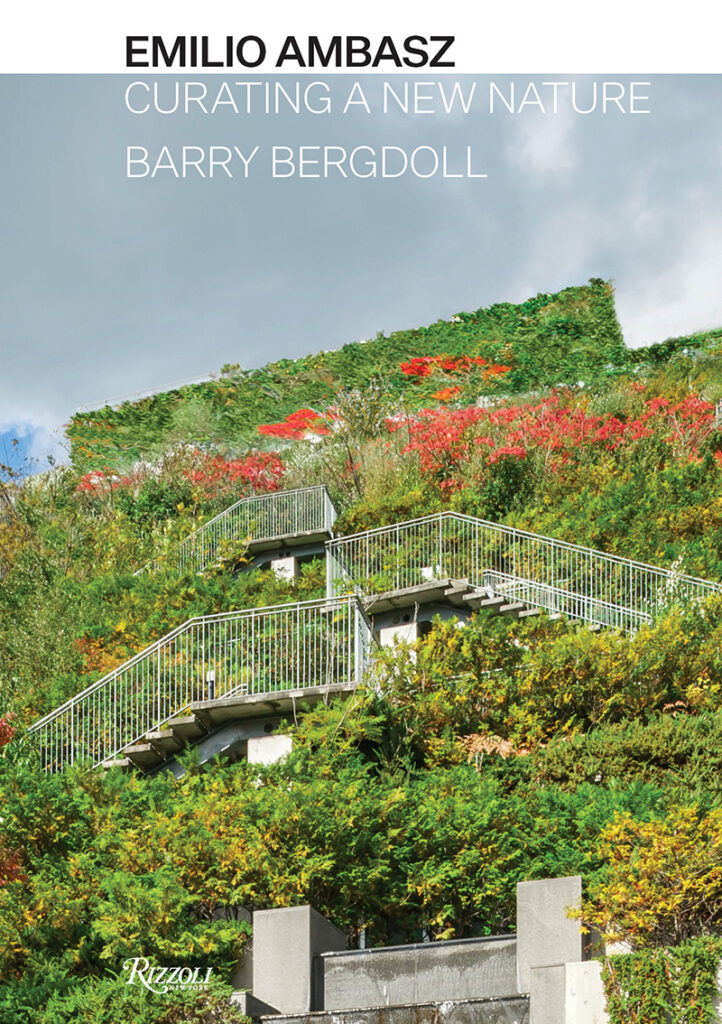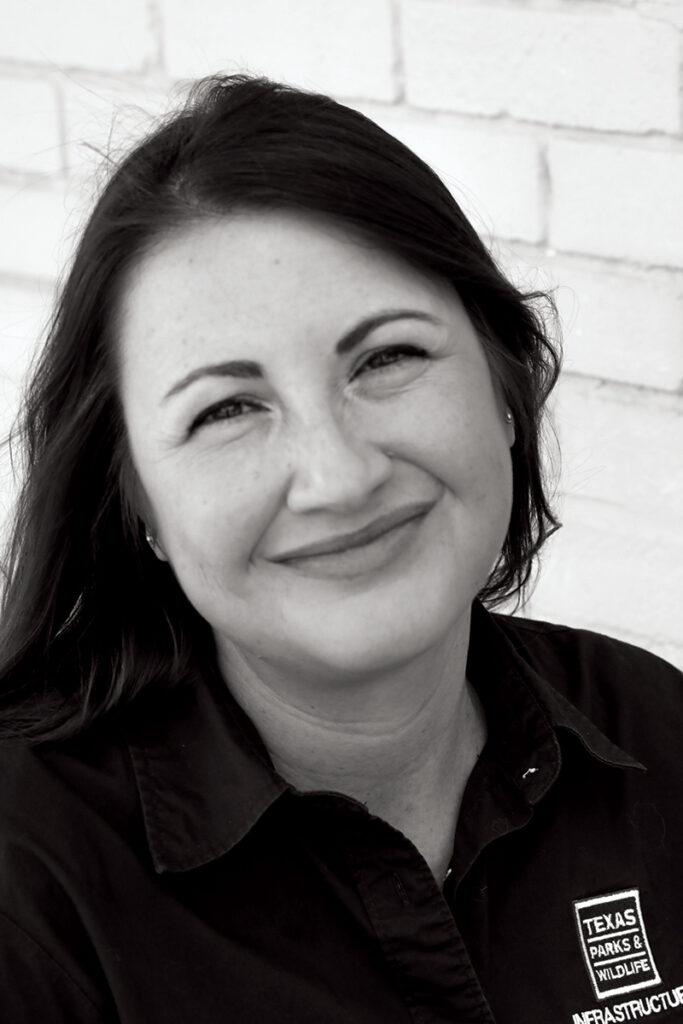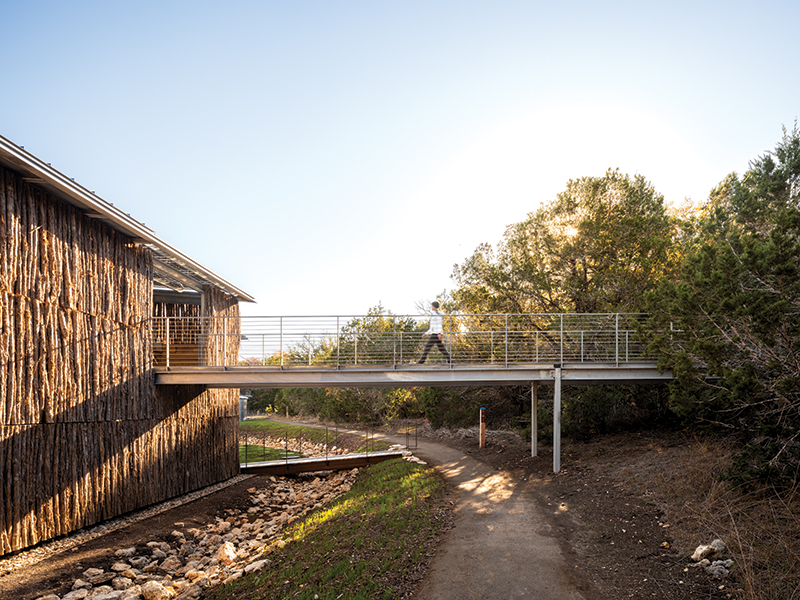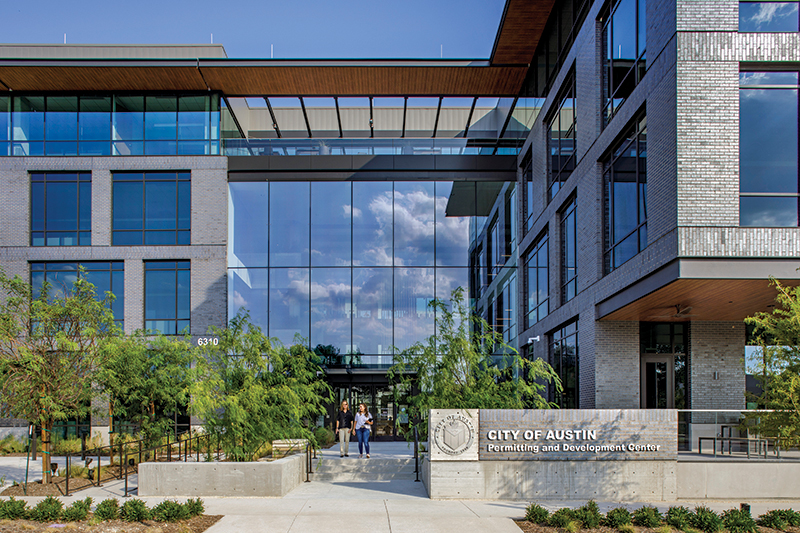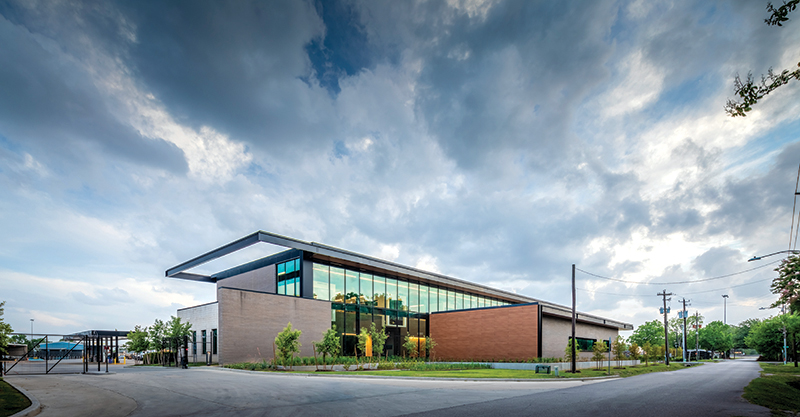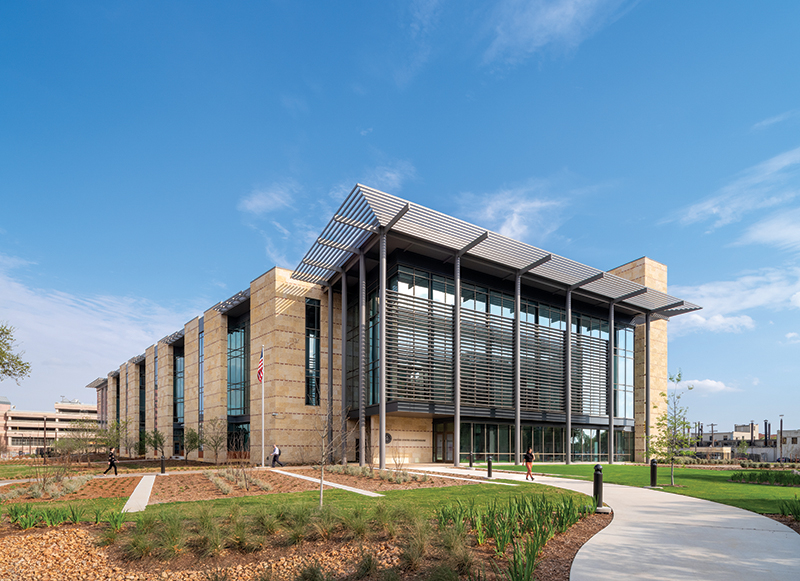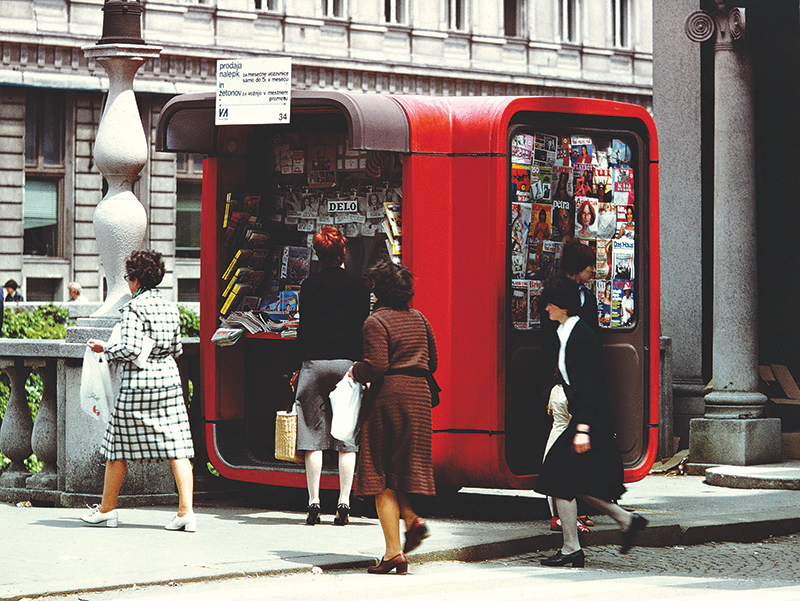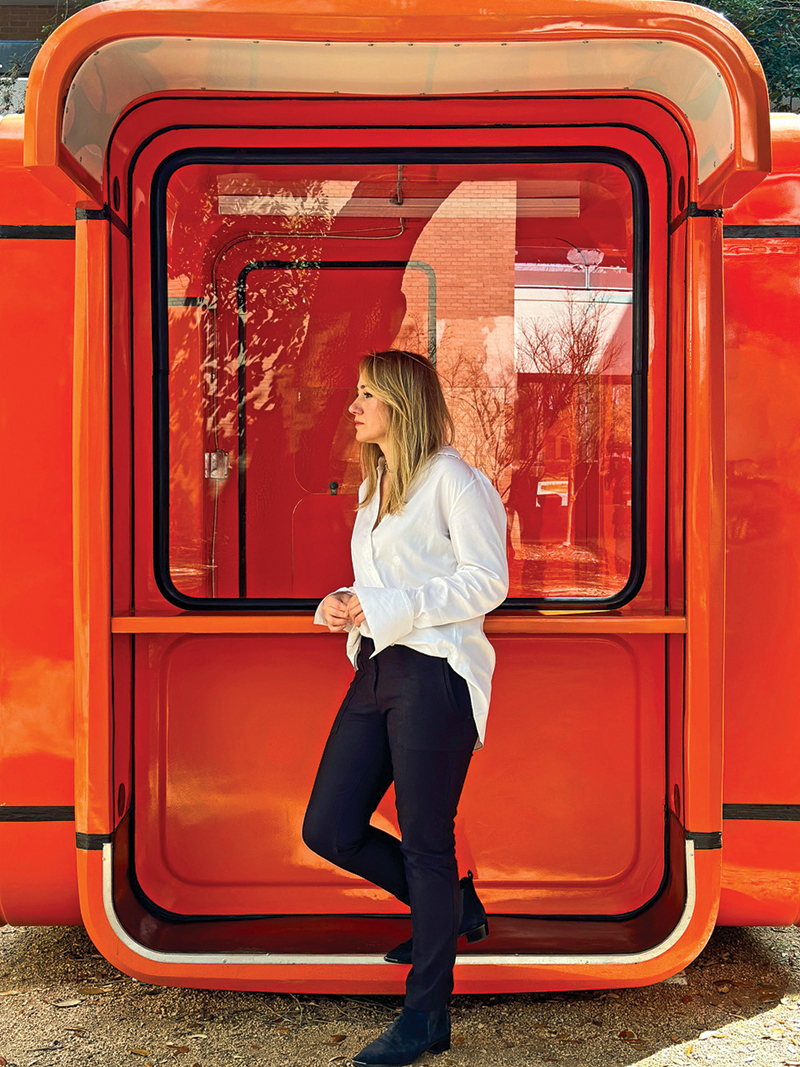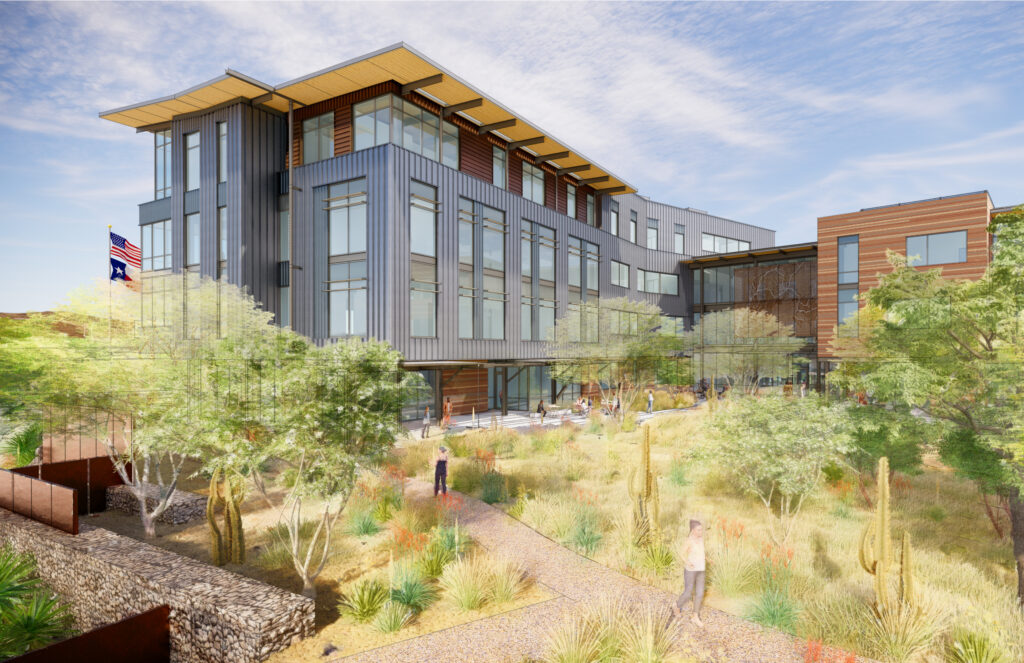
This Is Us: K67, More Than a Memory
Our digital lives, in large part, have relieved us of the burden of discovery. But finding new roads, venturing into unknown communities, and meeting new people can take us out of a place of comfort and challenge us through new experiences. “This Is Us” is a series that explores the diverse communities that make up our vast state, sprawling across a land area that could challenge even the most intrepid explorer. Let’s set out to meet our neighbors and discover communities that inspire us to reconnect.
Architecture professor and designer Dijana Handanovic’s heart raced as the truck pulled around the corner. Strapped to the bed was a cherry-red polyfiber reinforced modular unit, the K67 kiosk, with its protective plastic film waving in the wind. Fresh off the ship from its transatlantic voyage, the structure was as futuristic as it was retro. Handanovic was arriving home in Houston, but it dawned on her that, in a way, she was also finally arriving home in Yugoslavia: Her dream of reviving the optimism represented by this pre-war artifact and honoring the ceremonies of everyday life in her former homeland was becoming a reality.
Slovenian architect Saša Janez Mächtig designed the K67 in 1966, the unit embodying the excitement of modern design and new mass-production techniques for industrial materials. Mächtig’s concept was based on intersecting structural pipes combined with accessory equipment such as canopies and shelving systems. “They completely populated Yugoslavian streets in the ’70s and ’80s,” recalls Handanovic excitedly. The modules — 8 feet wide, 8 feet long, and 8 feet tall — could be connected to one another in various ways and were used as newspaper stands, coffee shops, and ticket booths, as well as for many other purposes. Each instance holds joyful memories for those who visited them, reminding them of a simple interaction at a specific moment and place. “You can truly see that it occupied our streets in a very playful, adaptable ‘I can be whatever you want me to be’ way,” says Handanovic. “It didn’t have a forced ideology to it.” The value she sees in refurbishing the K67 and bringing it to Texas is a larger cultural message about what monuments can and should be, following a violent conflict.
Although Handanovic and her family fled the former Yugoslavia when she was a child after the Bosnian war broke out, she doesn’t identify as a refugee. She and her husband, Samir Becic, settled in Houston, where they built a life in pursuit of their dreams. “My son is nine now and says he is all Texan,” she says, laughing with pride. The hard work and grit that it took to cement her place in a large, foreign city reflects the values she grew up with. Then her tone shifts, becoming serious as she ruminates about her homeland: “When I look at the country I was born in, now called Bosnia and Herzegovina, I see an ethnically diverse country still struggling with finding a common ground between all the people. It’s still living in the past.”
Looking back isn’t an experience Handanovic relishes, but her architectural studies drove her to re-examine the meaning of the place she grew up in, a place that no longer exists as she remembers it. She also felt drawn to the joyful memories she had from her early years. Says Handanovic: “I started looking into the K67 and talking to people from different backgrounds. Everyone had something positive to say about it…. I found one and convinced this guy to sell it to me, so we moved it to my family’s house in Bosnia.
Over the next three summers during the restoration process, which took place first in a field next to her house in Europe and later in her workshop, a magical yet ordinary thing occurred. Friends, family, neighbors, and strangers would stop by to see her progress and share their stories of buying gum, cigarettes, or sandwiches from a K67 in their old neighborhoods before the war. Seeing the role that a piece of everyday architecture played for people carrying the memory of war fed her restoration efforts, says Handonovic, noting how few of the kiosks are left in existence. “Those that you can find usually have been badly damaged through war and time. In order to restore one, you have to have three or four to piece together.”
Memories are ephemeral, making it difficult to separate the idea of a place from the reality of it, leaving them to coexist. The spaces we inhabit contribute greatly to memory, which puts architects directly in the position to help reconcile the ravages of war. Handanovic explains: “Imagine you have a memory of this happy place, then it’s destroyed, so now your memory stays with that destruction. You continue living after the war, looking at that ruin that reminds you of where that devastation is coming from. For me, I don’t think of that destruction when I’m in Houston, but when I go back and I see bullet holes still in buildings, I realize it can’t be easy to live there.” These experiences led her to start asking herself how she could reconstruct pre-war memories of happier experiences and what role architecture plays in this reconstruction.
For context, Yugoslavia dissolved and in its place are now Slovenia, Croatia, Bosnia and Herzegovina, Serbia, Montenegro, Kosovo, and North Macedonia. The Bosnian war lasted from 1992 to 1995. Slobodan Milošević came to power in Yugoslavia in the late ’80s, pushing a divisive nationalistic rhetoric to intentionally create conflict between the three main ethnic groups in the region: Serbs, Croats, and Bosnian Muslims known as Bosniaks. By taking advantage of the tensions created by World War II alliances that left people divided, he catapulted the region into a four-year-long war marked by ethnic cleansing that culminated in the Srebrenica genocide. Over the course of the war, more than 100,000 civilians were killed, and millions were displaced.
Despite the intervening years, vestiges of violence still scar the buildings and minds of citizens throughout the Balkan region. In an effort to establish their dominance, political leaders have uplifted monuments defined by the Brutalism of the 1950s and ’60s. Handanovic’s restoration of the K67 is a response to the out-of-touch and imposing memorials strewn throughout her country. “Current monuments in Bosnia talk about how we are all the same and about brotherhood and unity, which sounds utopian, but it was forced,” she says. “There are political agendas. The K67 is an unintentional monument.” As wars in various regions of the world stretch on, the effects of conflict on architecture and culture open fresh wounds for many. Architects have a unique ability to redefine with the public what monuments are and, through that exploration, reconnect people across generations and other divides.
Handanovic’s research continues the lineage of Mächtig’s work by recognizing the impact of ordinary daily activities. Her vision for a new way to remember her homeland is revealed in her exhibition “Kiosk K67: System for Urban Imagination,” which was on display at the University of Houston’s Blaffer Art Museum earlier this year. Says Handanovic: “My goal is to try to preserve a piece of my history and give it life again. Especially here at UH, which is an incredibly diverse campus.” UH holds a special place for Handanovic as an institution that embraced her throughout her journey. “I didn’t speak English when I came to this country,” she says. “I got a student visa and began taking classes at the Language and Culture Center at the University of Houston.” She later transferred to the university to complete both her Bachelor of Liberal Arts and Social Science in Interior Design and Master of Architecture. Now, as a professor of architecture, she feels tied to the city. “Houston became a community for me,” says Handanovic. The city of Houston is home to many people from the Balkans, and her hope is that all people from the former Yugoslavia will meet at the kiosk to continue their stories.
The exhibition is one facet of outreach Handanovic coordinated. As a professor, she also wanted to help her students gain an understanding of the importance of the kiosk to history and the future of design for areas surviving post conflict. Her spring 2021 studio, with a combination of fourth- and fifth-year undergraduate students, looked at the K67 as a catalyst to propose an urban intervention. “They had to pick a site anywhere in Bosnia, do their own research about the country, look at the history, and think about how architecture and design can play a role in creating unity and being a catalyst for productive dialogue,” Handanovic explains.
Since her restored K67 hadn’t arrived in Houston yet, the students explored the scale and possibilities of the kiosk through a virtual reality model. Says Handanovic: “The VR group was looking at how to connect because the country is divided into regions. They looked at how VR technology could connect people who are maybe sitting here in one city, and their shadow might be projected in another city on a sidewalk. They mapped how much [the project] would evolve in the future — how would it change [people’s] perceptions of each other, because we do the same things; we are the same people.” The studio was a product of letting her students explore and teach themselves. Unlike traditional educators, Handanovic sees herself as a group member more than a professor, and she helps by being part of the discussion. “When you let them go, they do amazing stuff,” she says. “That’s why I’m super excited about this generation.”
With more than 400 attendees, the opening for the K67 exhibition at the Blaffer soared beyond expectations, confirming Mächtig’s belief that design can act as a monument and connector in the place of its birth as well as abroad. At the entrance to the exhibit, a playful introduction written from the perspective of the kiosk greeted visitors. An excerpt sums up the embedded meaning of the show:
More than just a kiosk, …
I am a stage — a place for stories to be exchanged.
A daily ritual — a marriage between architecture and industrial design. But I am not a house, nor an object.
I am a system for urban imagination.
So, let me re-introduce myself.
I am a memory,
I am hope,
I am a place within a place.
Handanovic’s home is now Houston, but her brave odyssey to transport a piece of architectural history through space and time — from 1966 Yugoslavia to Texas half a century later — highlights how strong the memory of home can be. The next stop for her K67 is unknown, but each new conversation sparked by the kiosk celebrates the myriad of mundane places we too quickly take for granted.
Jes Deaver, AIA, is an architect and writer in Austin.
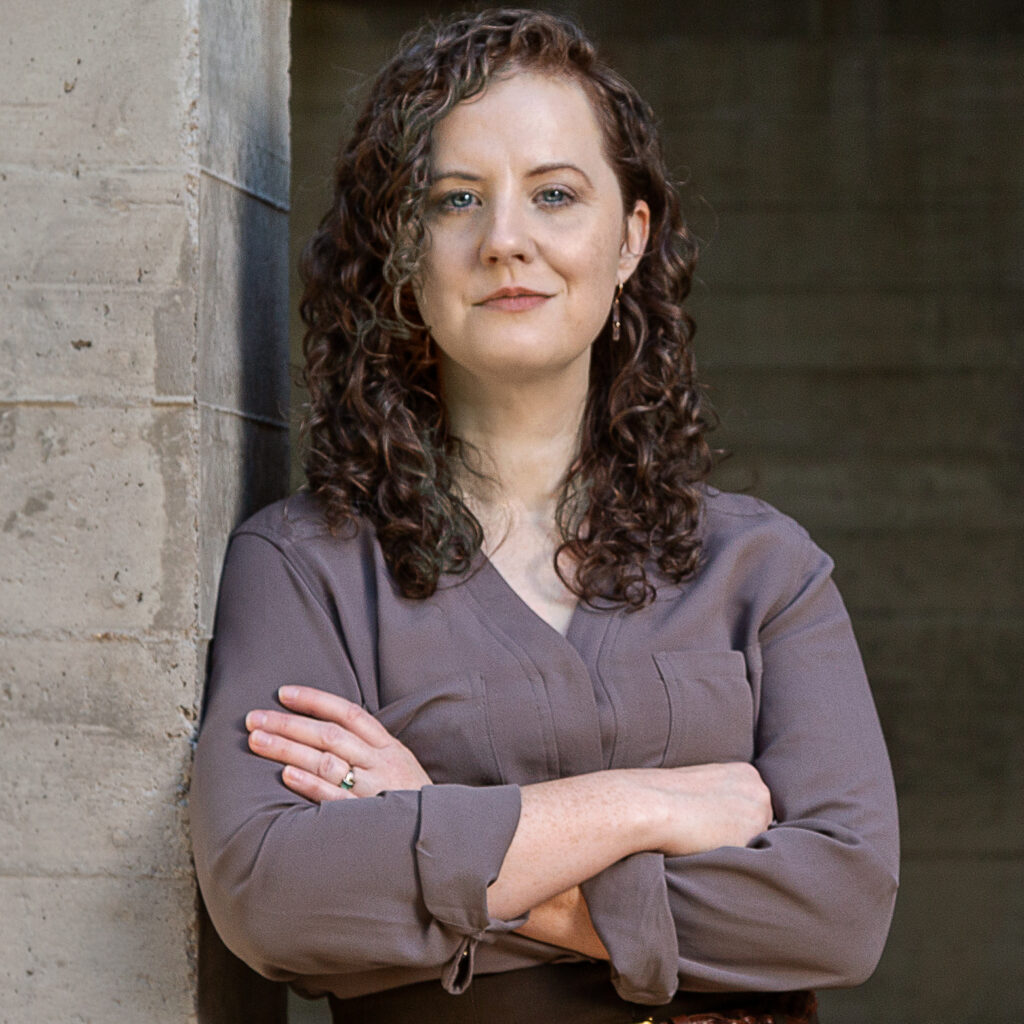
Also from this issue

